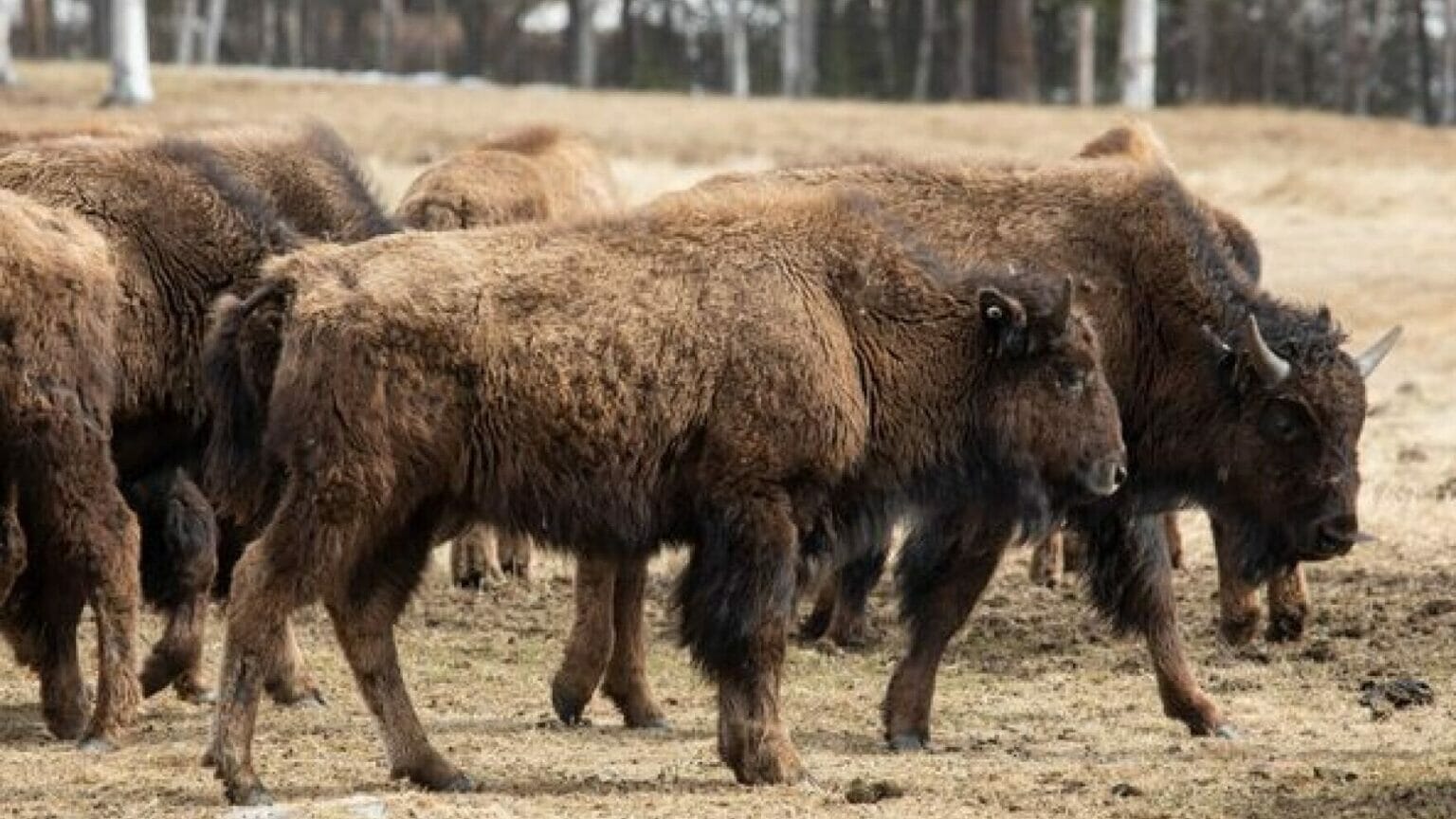After last year's harsh winter, a herd of wood bison introduced to Alaska is smaller than it's ever been
The latest population survey shows the herd dropped from about 150 to 72 animals over the last year. A project to reestablish wood bison in Alaska suffered a setback last winter when harsh weather caused a major decline in the Lower Innoko and Yukon Rivers herd. The population dropped from about 150 to 72 animals over the last year, attributed to extreme winter weather. Federal tribal partners are working to restore the animals in Alaska, with 130 transplanted from Alberta, Canada in 2015 and 28 Canadian animals added in 2022. Meanwhile, planning continues to expand the effort, with the focus being on sites in the Eastern Interior where snow cover tends to be lighter. The Wood Bison Restoration Project is paid for primarily with federal funds.

Được phát hành : 2 năm trước qua KUAC - Fairbanks, Dan Bross trong Science
A project to reestablish wood bison in Alaska suffered a setback last winter when harsh weather caused a major decline in the Lower Innoko and Yukon Rivers herd.
Alaska Department of Fish and Game wood bison biologist Tom Seaton says the latest population survey shows the herd dropped from about 150 to 72 animals over the last year. He attributes the decline to extreme winter weather, with heavy snow on the ground from last October through the end of this past May.
“It was just a bad combination of things: difficult snow to get through, to get to the forage,” Seaton said. “Snow that lasted a long time and snow that was quite deep.”
Seaton says the current population of 72 wood bison is the lowest since state, federal tribal partners working to reestablish the animals in Alaska transplanted 130 from Alberta, Canada in 2015. Another 28 Canadian animals were added in 2022.
But Seaton emphasizes that the herd has seen weather-driven fluctuations since 2015.
“Had a couple years of slow growth, then had a decline from around 140 to near 90 and then had a jump back over a hundred and then back down to ninety something,” he said. “Then a couple jumps above a hundred, all the way up to 150 last year, and then now down to 70-some.”
Meanwhile, planning continues to expand the effort to reestablish wood bison in Alaska. Seaton says the focus is on sites in the Eastern Interior, where snow cover tends to be lighter.
“So, Yukon Flats, lower Tanana drainage, and upper Tanana drainage — all have conditions that are more conducive to bison performance,” he said.
Seaton says they are working with local groups through a public planning process to identify a second wood bison restoration site where animals could be transplanted as early as next summer. The Wood Bison Restoration Project is paid for primarily with federal funds
Chủ đề: Wildlife, Bison, Alaska
